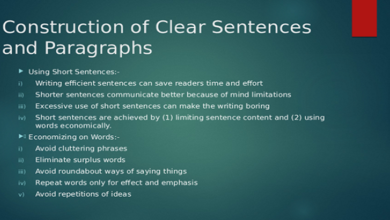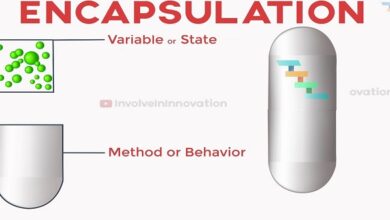
Sentences
It is easier to get away with using awkward or incorrect sentences in spoken English than poor paragraph construction. Let us look, for example, at one of the examples of a nonsentence above: ‘There is only one problem. The cost.’ As we saw, ‘the cost’ is not a sentence, because it does not have a predicate. The correct construction should have been, ‘There is only one problem: the cost.’ However, when speaking, the difference between the length of pause required after a colon and that required after a full stop is so small that when speaking it will not be noticed.
Paragraphs
It is more important to ensure that you do not ignore paragraphing when preparing to speak. You should divide your material into paragraphs in exactly the same way as you would if you were preparing a written document, even though you may not prepare the exact sentences you intend to use in each paragraph.
The first reason for this is that paragraphing allows you and your audience to pause and collect your thoughts or absorb what has just been said before you move on to the next topic. That is what a paragraph break is for, and just as readers pause at the end of a paragraph, so should you when speaking. We have all come across people who speak in a constant stream, without a pause and with one subject merging apparently seamlessly into the next. It is not only very difficult to follow, it can also be very tiring! Moreover, it makes two-way communication very difficult, as the other person has no opportunity to ask questions or raise points of clarification. Try speaking the following passage (or even better, ask someone else to read it to you), and you will see the problem.
What I am proposing is that we take a completely new look at the way we run our organization. At the moment, we run it on rather paternalistic lines, which may have been fine when the company was first set up, but times and attitudes have changed since then. We are also no longer a small family firm; perhaps paternalism is more acceptable in such circumstances. What we need is a complete change of culture, with more decisions being made at lower levels in the hierarchy and with the employees being empowered to take action on their own initiative. Such a major change might meet with some resistance among certain senior managers, who might resent what they see as a loss of power – and possibly even among some lower down the scale, who are not used to being asked to make decisions, and could feel somewhat vulnerable.
Not only is it difficult to follow the train of thought because the subjects merge into each other, but if the listener wanted clarification of any of the points raised, they would not know when (or how) to break into the flow.
When speaking, you also still need a topic sentence – indeed it could be argued that it is even more important when speaking than when writing. At least the reader of a document will eventually be able to work out what the paragraph is about without a topic sentence, but someone listening to you speaking will need this indicator at the start.
The same applies to signalling devices; if you do not signal your intentions at the start of a paragraph in a document it will look disjointed, but at least the reader will be able to work out where you are taking the subject with a bit of effort. However, if you omit the signalling devices when you are speaking, you are likely to lose your listeners. They will not understand whether you are expanding on the topic of the last paragraph, changing direction or moving your argument forward.
Last word
What this means is that, although the relative informality of spoken English enables you to get away with less grammatical sentences than in a written document, you should try to speak as grammatically as possible without sounding artificial. And you should certainly not ignore the rules regarding paragraphing – they are, if anything, more important in spoken work.




